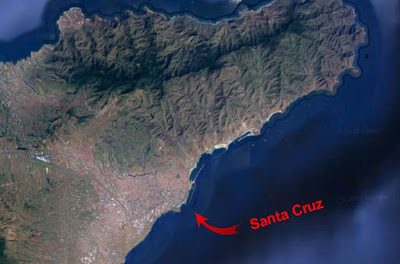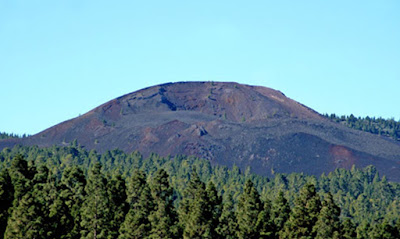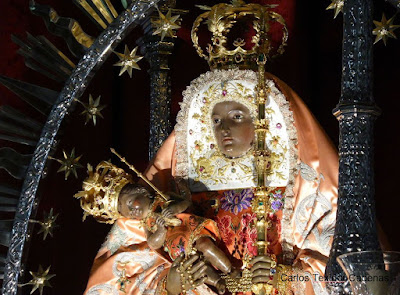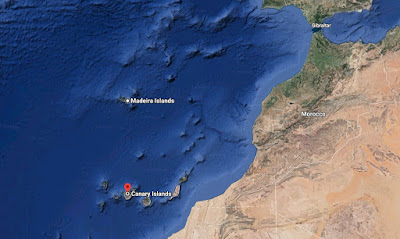September 19, 2020
Santa Cruz de Tenerife is the capital of the island of Tenerife, Province of Santa Cruz de Tenerife, and capital jointly with Las Palmas of the Canary Islands. It is called “A Global City” because it is the communications hub between Europe, Africa and Americas.
Facts you might not have known about the Canary Islands.
They were not named after canary birds. The comes from the Latin word for dog, “canaria.” One story is that when some of the first Europeans arrived, they found large dogs on the island of Grand Canary. In fact, they might not even be named after dogs at all, but rather after seals which used to inhabit the island, which the Romans called “sea dogs.”
They have the highest point in Spain. Despite having the Pyrenees mountains in-country, the highest point in Spain is actually on the island of Tenerife. El Teide is 12,198 feet high. The Pyrenees reach to 11,168 feet.
El Teide is home to the Gran Telescopio Canarias, a 34 feet reflecting telescope – the world’s largest single-aperture optical telescope. Construction of the telescope took seven years and cost $145 million https://www.youtube.com/watch?v=6m3lfpB8ERo.
You can cook food over a volcano. While there are no volcanoes currently erupting in the Canaries, the last one almost 200 years ago, but there is still a significant amount of heat just below the surface. In Timanfaya National Park, El Diablo Restaurante has a 30 foot deep hole was which was dug to access the heat, the top of which is used as a grill. The temperature of the grill reaches 400C and uses no energy.
The Canaries are home to a whistling language. Silbo Gomero, also known as el silbo (“the whistle”), is a whistled register of Spanish used to communicate across the deep ravines and narrow valleys. It enables messages to be exchanged over a distance of up to 3 miles. As technology changed the ease in which people could communicate, the language was in danger of dying out in the 20th Century. The government took measures to teach the language to children in school.
I found a great video that demonstrates Silbo Gomero, the whistling language https://www.youtube.com/watch?v=MpSZDM_9C-U.
The Guanches were the indigenous peoples of Tenerife. They were the only native people known to have lived in the region before the arrival of Europeans.
The population seems to have lived in relative isolation up to the time of the Castilian conquest, led by Jean de Bethencourt.
In the First Battle of Acentejo (May 31, 1494), called La Matanza (the slaughter), Guanches ambushed the Castillians in a valley. The Castillians blundered into a blind ravine in Acentejo. Despite their technological superiority – blunderbusses and cannon – the Guanches attacked them from the slopes with stones and banotes (spears of hardened wood). Only one in five of the Castillians survived. The victory was short lived, however, and the Guanches were absorbed by Spanish settlers.
Pretending we are on a cruise ship docked at Tenerife, let’s explore a few of the major sites.
The old Port of Garachico was the most important on the island of Tenerife between the 17th and 18th centuries. In 1706, the eruption of the Trevejo volcano destroyed the port and with it the economic activity of the municipality.
During the early hours of May 5, 1706, Trevejo volcano exploded and poured into the sea through the slope of a steep ravine. Seven lava flows buried a large part of the town. There were no fatalities, as people had sufficient warning to escape.
The Mother Church of Santa Ana is the main church of Garachico. The Church is one of the most beautiful in Tenerife. Its origins date back to 1520. It was damaged by the 1706 volcano and rebuilt between 1714 and 1721.
The Basilica of the Royal Marian Shrine of Our Lady of Candelaria is the first Marian shrine of the Canary Islands, located in the city of Candelaria.
 |
| (I wonder if Pirates pitcher John Candelaria’s family came from there.) |
The Castle of St John the Baptist, also called Black Castle (Castillo Negro – because it was built in the Black Bay). Construction was started in 1641. It served as a military fort until 1924. It was converted to a military museum in 1948. Each year in July a re-enactment of the Battle of Santa Cruz de Tenerife takes place, commemorating the unsuccessful attempt by Admiral Horatio Nelson to invade the city.
Plaza de España (Spanish Square), is the largest square in Santa Cruz. In the heart of the city stands the great artificial lake and fountain. The square was built in 1929 on the historic site of Castillo de San Cristóbal, the first fortification of significance on the island of Tenerife.
Today, there is a museum housing the famous “Cañón Tigre” (Tiger Cannon), which shot a musket ball into Horatio Nelson’s right arm during the battle for Santa Cruz on July 25, 1797, causing his arm to be amputated.
Tenerife Espacio de las Artes (Tenerife Space of Arts) over 200,000 square feet is the most visited museum in Santa Cruz, housing art, a library, and a photography center.
From the Guanches to a volcano to historic battles to a modern, world-class city, this has been our visit to Santa Cruz: A Global City.
Next Saturday, Madeira as we continue towards the Mediterranean Sea.
-30-




















The canary island story was very interesting to me. I have wondered for years about what the Tweety Bird was saying and now I know even though I don't "tweet"
ReplyDelete